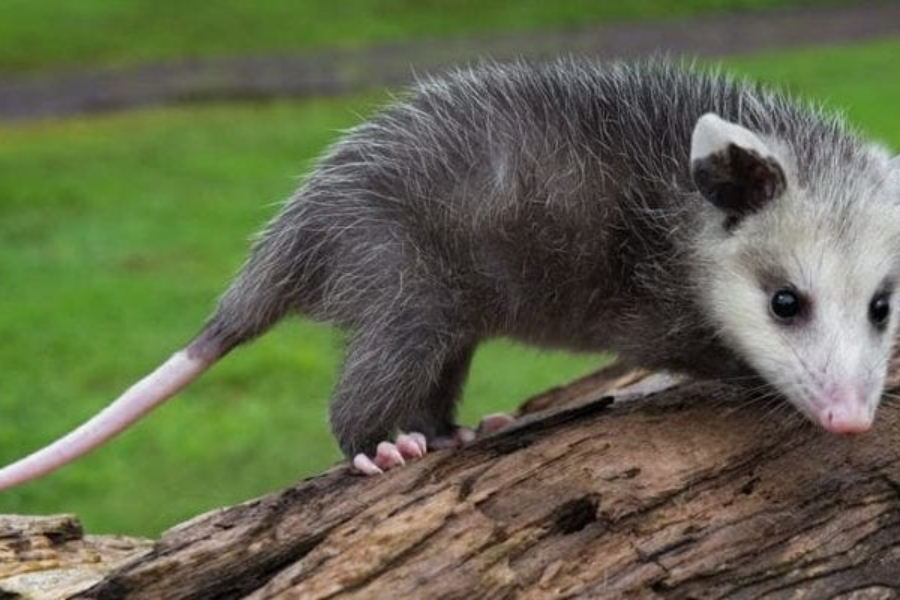Have you ever spotted a small, furry creature in your yard or near your trash cans? That might have been a tñacuache! This charming little animal, also known as an opossum in some parts of Latin America, is full of fascinating traits and quirks. In this blog, we’ll dive into the world of tñacuaches, exploring their habitats, diet, unique survival strategies, and their crucial role in the environment.
What is a Tñacuache?
A tñacuache is a type of opossum characterized by its small size, pointed face, and long, often bare tail. These animals typically sport gray fur, although some might have white patches. Their prehensile tails are particularly interesting—they use them to grasp branches and navigate their arboreal habitats with ease. Adaptable and resourceful, tñacuaches can thrive in a variety of environments, from lush forests to urban areas.
Where Do Tñacuaches Live?
Tñacuaches are native to Central and South America, where they predominantly reside in forests. These environments provide ample opportunities for climbing and foraging. However, tñacuaches are also adept at making their way into cities and towns, often scavenging for food in gardens or garbage bins. Being nocturnal, they are most active during the night, which means they are rarely seen during the day. At night, they search for food and safe hiding spots to avoid predators.
What Do Tñacuaches Eat?
These little critters are omnivores, meaning their diet includes both plants and animals. They enjoy a variety of foods, including fruits, insects, small animals, and even discarded human food. Their scavenging abilities make them highly adaptable, allowing them to survive in diverse environments. Tñacuaches also play a beneficial role in controlling pest populations, as they feed on insects and small rodents.
How Do Tñacuaches Protect Themselves?
Tñacuaches might look harmless, but they have developed several clever defense mechanisms. One of their most famous tactics is playing dead. When threatened, a tñacuache will collapse, appear lifeless, and emit a foul smell to deter predators. This strategy is effective because most predators prefer not to eat something that seems dead. Additionally, tñacuaches use their sharp claws and strong tails to climb trees quickly and escape danger. They also seek refuge in hiding spots like tree hollows, bushes, or under rocks.
Are Tñacuaches Dangerous?
Despite their sharp teeth and occasional unsettling behavior, tñacuaches are generally not dangerous to humans. These shy creatures prefer to avoid confrontation and are more likely to flee than to attack. If you encounter a tñacuache near your home, it’s usually just foraging for food or seeking a safe place. However, it’s best to observe from a distance and avoid direct interaction, as even non-aggressive animals can bite if they feel threatened.
Why Are Tñacuaches Important for the Environment?
Tñacuaches contribute significantly to the ecosystem. By preying on insects and small rodents, they help control pest populations, which can prevent the spread of diseases and protect crops. Additionally, as tñacuaches consume fruits, they help disperse seeds through their droppings. This seed dispersal supports plant growth and contributes to the overall health of their habitat.
How to Help Tñacuaches Live Safely
If you live in an area where tñacuaches are common, there are a few steps you can take to ensure their safety. Avoid leaving food or garbage exposed, as this can attract tñacuaches and increase their risk of harm. Secure your trash cans and keep pet food indoors. Providing natural cover, such as bushes or trees, can also offer tñacuaches safe hiding spots. Additionally, refrain from using harmful chemicals or pesticides in your yard, as these can negatively impact tñacuaches and other wildlife.
Myths and Truths About Tñacuaches
There are many misconceptions about tñacuaches, with some believing they are dirty or dangerous. In reality, tñacuaches are clean animals that groom themselves regularly. They are also less likely to carry diseases like rabies compared to other wild animals. Understanding these facts can help dispel myths and foster a greater appreciation for these intriguing creatures.
Conclusion
Tñacuaches may be perceived as mysterious or even intimidating, but they are remarkable animals that play an essential role in our ecosystem. By controlling pests, dispersing seeds, and adapting to various environments, they contribute significantly to the balance of nature. Next time you spot a tñacuache, remember the important role it plays in maintaining the health of our environment and appreciate this little animal for all its contributions!
Explore comprehensive updates and expert insights at MySDMC SSO.


Leave a Reply